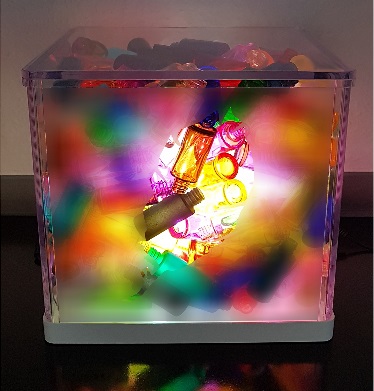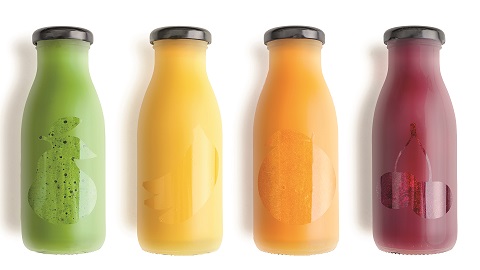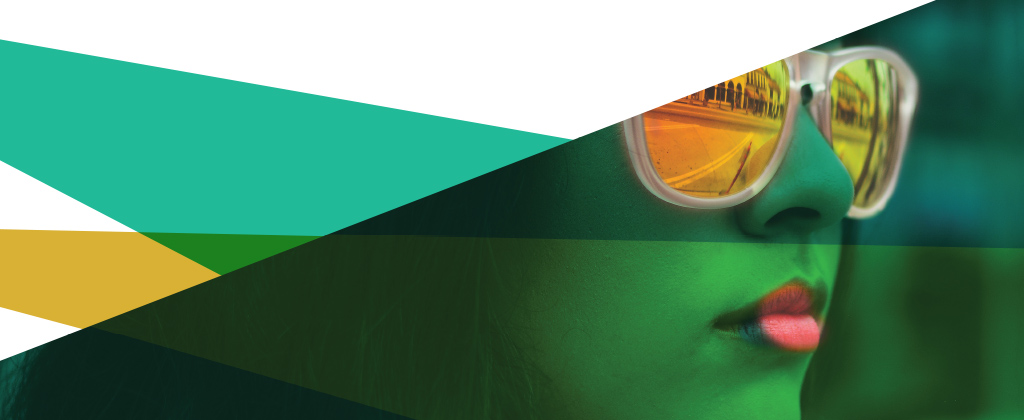The Ferro Peel-Off Film for window effects in glass decoration

THANK YOU FOR YOUR INQUIRY. OUR TEAM WILL BE CONTACTING YOU SHORTLY.
The Ferro Peel-Off Film for window effects in glass decoration
Introducing an easy-to-use, cost-effective, precise and automatable solution to create a decorative mask or protective film for use on glass hollowware and/or flat glass substrates.

Challenge
For many years, designers and manufacturers of drinking glasses and glass bottles have been interested in the possibilities to produce a transparent window as part of the glass design, with options to use this window in combination with acid etch effects or other colored decorations such as all-over coatings or printed labels.
Up till now, the traditional processes used can be complicated, costly, difficult to automate and often result in a poor-quality result. Typically, the process involves applying a masking sticker or decal, often manually, and then applying an organic coating or acid etch, after which the underlying mask must be carefully removed – again, manually - to reveal the required transparent window. With colored water-borne organic coatings applied on top of the mask, typically the coating is firstly dried (but not fully cured) in the flash-off zone, the mask is then delicately removed from underneath the dried layer, and finally the top coating is fully cured at around 150-200oC to fix and harden the paint. Clearly, in this kind of process, removal of the underlying mask must be made with the utmost care in order not to damage the decorative top-coat layer. This means that placing and removing the mask is not only time-consuming and potentially costly but also carries significant quality risks, as operatives are physically handling bottles that are only dried, not fully cured, and therefore easy to damage. Additionally, with some of the processes used, sticky residues from the masking film may be left on the bottle after curing, if the masking film has not been removed properly; in such cases, the residues need to be cleaned afterwards incurring more time and cost.
Solution
Recognizing these issues, Ferro’s R&D laboratories at our Diegel plant in Germany set out to create a film which is:
- Simple, fast and precise to apply
- Cost-effective
- Compatible with existing application technologies used by our customers
To satisfy these criteria, we decided immediately that our version of a peel-off film should be UV-curable and screen-printable. This would be the best route to maximize productivity, cost-effectiveness, quality and to optimize our ability to automate the process.
The big challenge is to develop a product that has reasonable integrity to the surface and does not fall off immediately but that can be easily removed later! Thanks to strong support and co-operation from our customers, we have developed a very good system which offers various application possibilities.
For drinking glasses or glass bottles packaging, fundamentally our new peel-off film technology is screen-printed and UV-cured. The water-borne organic coating is applied on top and cured at around 200oC. Or alternatively, a real acid etch can be applied with the usual process methods.
Regarding the critical peel-off method, we made a lot of trials to discover the best way to remove the film from the object. Manual peeling of the foil after an initial drying flash-off of the colored over-coat, or after the curing oven, was not the target, so we made a lot of trials and came up with the solution of compressed air or an adhesive tape.

Removal of the film
The removal of the film can easily be done by an initial damaging of the surface in the printed area with a sharp tool, or even a fingernail is enough, and with compressed air you can then blow off the complete design.
The possibility to remove it with an adhesive tape is a little trickier and you will need the right tape/ decorative coating combination to peel it off at one time with the tape. A combination of both is possible and could avoid the need to damage the printed surface too.
In addition to the possibilities outlined for hollow-ware decoration, we see this technology presenting important new opportunities for the processed flat glass and automotive glass industries. For example, there is potential to use these layers as transport protection for large decorated or complex printed glass windows or façade elements. For protection of IG units, tempered or laminated automotive glass parts. For such large format glass applications, we looked at the possibilities of roller-coating or spray application of our peel-off film, and we were able to achieve good results by further optimizing our system. Trials we have made have shown that our film is easy to remove from large format glass parts, without leaving marks on the glass, compared to traditional films that are widely used currently.
We are excited that the feedback we have received so far from customers has been very positive, and we are already thinking about further applications and possibilities for this product.
We see this product as a new step towards automation 4.0 in the glass sector and are pleased to be able to support you in successfully implementing this product in your processes to make this a success for your company as well.
Benefits
- Simple, fast and precise to apply
- Cost-effective
- Compatible with existing application technologies used by our customers
Opportunities for automation processes
In all cases, what is produced is a high quality, cost-effective, clear transparent window, embedded within a cured decorative organic coating. Additionally, if required, the design can be further enhanced by over-printing the window with organic inks, a feature that is not usually possible with earlier peel-off systems. And critically, Ferro’s new technology provides the option of full automation.
In addition to the possibilities outlined for hollow-ware decoration, we see this technology presenting important new opportunities for the processed flat glass and automotive glass industries. For example, there is potential to use these layers as transport protection for large decorated or complex printed glass windows or façade elements. For protection of IG units, tempered or laminated automotive glass parts. For such large format glass applications, we looked at the possibilities of roller-coating or spray application of our peel-off film, and we were able to achieve good results by further optimizing our system. Trials we have made have shown that our film is easy to remove from large format glass parts, without leaving marks on the glass, compared to traditional films that are widely used currently.
We are excited that the feedback we have received so far from customers has been very positive, and we are already thinking about further applications and possibilities for this product.
We see this product as a new step towards automation 4.0 in the glass sector and are pleased to be able to support you in successfully implementing this product in your processes to make this a success for your company as well.
